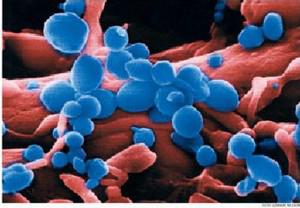BiosurveillanceDistinguishing harmless bacteria from pathogens
Bacteria underpins much of our world, acting behind the scenes to affect the health and behavior of animals and plants. They help produce food, provide oxygen, and even reshape the environment through a vast array of biological processes. They come in a phenomenal number of strains—many still unknown—and thrive in different ecological and environmental niches all over the world. But while their diverse behaviors make them essential to life, bacteria can also be deadly. This threat only grows as greater global travel brings people into contact with new places, foods, and animals, dramatically increasing the chances of exposure to dangerous microbial species known as pathogens.

Effort to instantly differentiate pathogens from benign microbes underway // Source: yahoo.com
Bacteria underpins much of our world, acting behind the scenes to affect the health and behavior of animals and plants. They help produce food, provide oxygen, and even reshape the environment through a vast array of biological processes. They come in a phenomenal number of strains—many still unknown—and thrive in different ecological and environmental niches all over the world. But while their diverse behaviors make them essential to life, bacteria can also be deadly. This threat only grows as greater global travel brings people into contact with new places, foods, and animals, dramatically increasing the chances of exposure to dangerous microbial species known as pathogens.
How can the Department of Defense—whose forces, deployed around the world, constantly come into contact with new bacteria—discriminate between harmless and virulent strains to prevent a disease outbreak that threatens military readiness? DARPA says that Friend or Foe, a new program from DARPA’s Biological Technologies Office, proposes to develop a platform technology that rapidly screens unfamiliar bacteria to establish their pathogenicity and even discover unknown pathogenic traits, necessary first steps for designing effective biosurveillance and countermeasures.
“Trends such as rising global population, changes in the environment, and the growing accessibility of tools for genetic engineering mean that our armed forces are increasingly likely to face new bacterial pathogens, whether they occur naturally or are engineered by adversaries,” said Paul Sheehan, the program manager for Friend or Foe. “Our existing biosurveillance strategies don’t work on previously undiscovered bacteria or on bacteria that have been specifically designed to evade detection by current tests. We need new screening tools that can quickly characterize the threat to enable a rapid response.”
